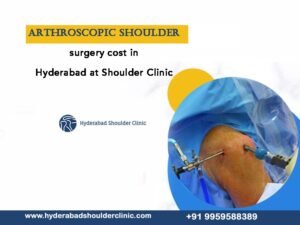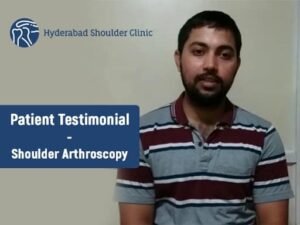Many patients ask doctors, “How long does it take to recover from shoulder arthroscopic rotator cuff repair?” The answer depends on many things: Is it a surgery to get rid of a traumatic or degenerative injury? How old are you? Are you in a good or bad physical condition during operation? Do you smoke? Do you have comorbidities like diabetes? What is your diet? Do you eat a lot of sugar, processed food and do you drink soda?
Let us see in detail!
Rotator cuff muscles are muscles that surround the shoulder joint. Their job is to give strength to lift and rotate arms. As we get older, these muscles become thinner and tear easily, sometimes with minimal trauma. In younger patients, rupture is usually associated with a significant injury. When the rotator cuff breaks, it usually occurs in the connection of muscles to tendons, which are part of the muscles that insert into the bone.
In some cases, surgery is considered immediately after an injury, while in other situations, surgery is only the last step when all other treatments fail. Unfortunately, if the rotator cuff muscles are torn, they will not repair themselves. Leaving them without treatment can lead to progression of the tear, that causes progressive loss of movement and strength. The results of surgery may be better with smaller tears than with larger ones. The longer the crack is left unattended, the more unsatisfactory the results of the operation.
Patients usually experience severe hand pain, discomfort at night, and limited movement and strength. However, they can lose most of their shoulder movements.
In most cases, most shoulder injuries do not require surgery. If the tear in the rotator cuff tendons and ligaments that attach and enfold the head from the arm bone or humerus usually require surgery.
Arthroscopic shoulder surgery is a standard procedure. During the arthroscopic repair of the rotator cuff, your surgeon inserts a small camera, called an arthroscope, into your shoulder joint. The camera displays images on the television screen, and your surgeon uses these images to guide the mini surgical instrument. Three standard shoulder procedures are rotator cuff repair, repairing the labrum (cartilage) and subacromial decompression or debridement surgery.
Although the procedure can be done with minimal invasion using an arthroscope, there is usually a lengthy recovery period that can take up to six months. The reason for this is it takes some time for the tendon to heal and attach properly to the bone. The recovery phase naturally varies from patient to patient and depends on the severity of the tears. The recovery phase consists of several phases.
This article provided by Dr Chandra Sekhar.B shoulder Surgeongives information about the arthroscopic rotator cuff surgery recovery phases.
How does Long Will Recovery take After An Arthroscopic Rotator Cuff Repair?
Day Of Surgery:
Rotator cuff surgery usually takes several hours, depending on the work involved in repairing the torn tendon. After surgery, your arms are placed in a sling. A sling that holds the arm slightly to the side (abduction sling) is usually recommended because it keeps the tendon in a more relaxed position. You stay in the hospital until your pain is well controlled.
Recovery Phase 1: Postoperative period to 6 weeks (Passive Motion):

Immediately after surgery, you will be asked to keep your shoulders as comfortable as possible. Pain varies from person to person and depends on the level of shoulder repair. Frequent use of cold packs in the area helps reduce swelling and pain.
The first recovery phase can take up to 6 weeks after surgery, depending on the size of the rotator cuff tear and the strength of the repair. You are instructed to keep your shoulders as quiet as possible and keep your hands in the sling. Using a sling protects the weight of your hand from the tendon, which helps the healing process.
After some time and according to your personal needs, your surgeon will advise you to attend a physiotherapy session. Passive motion means that the rotator cuff muscles and tendons do not function. To do passive movements, your therapist will move your shoulders, not you. The therapist can instruct you on how to move your shoulder without pressing the rotator cuff muscles.
During this session, the therapist does exercises that involve the passive movement of the joint. Passive movements do not require muscle contraction. The biceps muscle mustn’t contract during this time. The therapist will move your arm easily for you without burdening unnecessary joints. They will also show how to move to avoid contracting muscles around the joint. This gentle motion is stimulated to prevent the formation of scars that will form if the joints do not move. The formation of scar tissue limits joint movement.
Recovery Phase 2: Postoperative period to 6 to 12 weeks (Active Motion):

You can do a limited amount of hand movements for the next 6 to 12 weeks. You cannot lift or push heavy objects because even after this time, putting the tension on the joints can pull the sutures that hold the tendons to the bone. You should avoid supporting your weight with a sore arm.
An active movement starts when the tendon is healed enough to move the arm, but before additional resistance is applied. From the moment of surgery, you can limit yourself to active exercise for up to 12 weeks. Active movement means you can move your own hands, but not against resistance.
Recovery Phase 3: Postoperative period to 3 to 6 Months (Strengthening):

This is a period where, after a relatively long period of inactivity, you begin to strengthen the muscles in your arm. This is important for your full recovery. However, care must be taken not to overload the joint because the tendon attachment to the bone is still in the healing process. There are several mild but effective exercises offered by your therapist to strengthen weakened muscles slowly.
The strengthening recovery phase is the most important phase. The rotator cuff muscles become weak due to injury, surgery, and the early stages of recovery. After the recovery has recovered enough, it is important to strengthen your muscles so that you can resume your normal activities.
Rotator cuff muscles do not require heavy weights for effective strengthening. A qualified therapist can instruct you in techniques to isolate and correct strengthening muscles so that only light resistance bands or weights offer excellent training.
Recovery Phase 4: Postoperative period to 6 to 12 months (Full activity):

Total recovery from rotator cuff surgery often takes 6 to 12 months and in some cases, longer. Important factors that determine the duration of recovery are rotator cuff tear size, ability to repair adequate tendons, and commitment to rehabilitation.
Knowing when to move from one rehabilitation phase to the next is art. Not everyone will undergo rehabilitation in the same way, and everyone must follow the prescribed rehabilitation protocol.
This is a comprehensive review of the rehabilitation phase after rotator cuff surgery. Remember that every patient, tear and operation is different. Although these steps are useful guidelines, each patient must discuss their specific recovery guidelines with their surgeon. Progress can be faster or slower, depending on several factors. While it’s tempting to compare progress with friends, family, or new acquaintances in the treatment room, their recovery may not be the same as yours. Make sure you know where you might need additional protection or extra time to bring your shoulders back to the top.
Conclusion:
As mentioned earlier, the duration of postoperative recovery varies from person to person and depends on the level of improvement needed. In all cases, orthopaedic surgeon instructions must be followed very carefully to minimize the risk of complications and restore the entire range of movement of your shoulder. For more information on shoulder surgery and the recovery phase, contact Dr Chandra Sekhar. B at 91 9959588389 from Hyderabad Shoulder Clinic.





